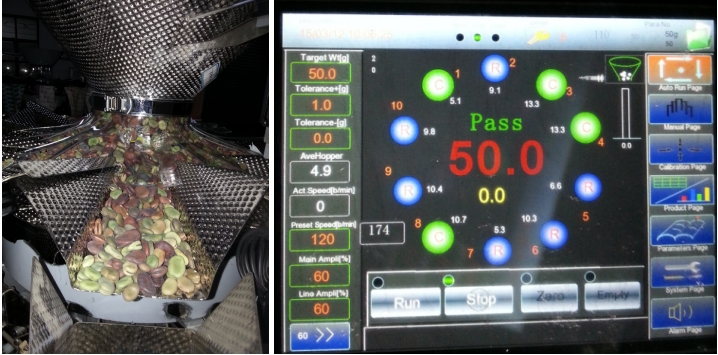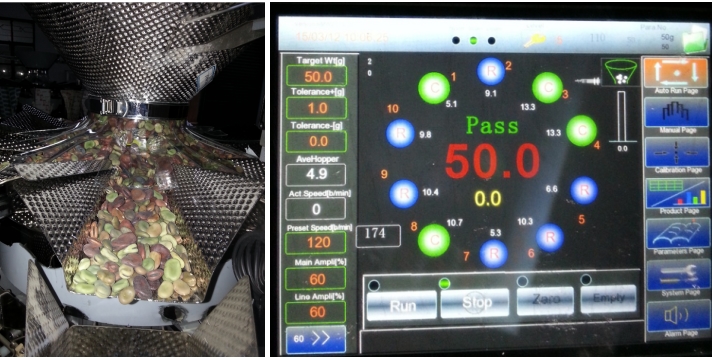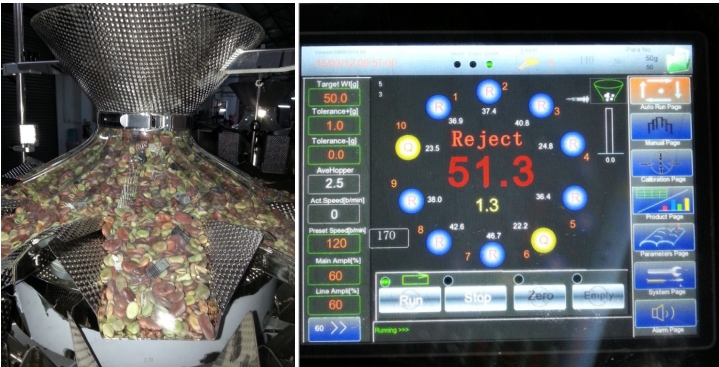Since 2012 - Smart Weigh is committed to helping clients increase productivity at a reduced cost. Contact us Now!
Since 2012 - Smart Weigh is committed to helping clients increase productivity at a reduced cost. Contact us Now!
Multihead weigher-how to adjust material thickness in a reasonable way
The thickness of the material directly affects the multihead weigher’s accuracy, thus affecting the actual production accuracy.
If material is too thick it cuease over weight ;if too thin, then weigh hopper feed for many times, weigher’s speed will be slower .
You can adjust below rod (up and down) to change the thickness of the material.

Adjust rod (up and down) to change the thickness of material


If touch screen’s average combination hoppers is less than 5, or the linear feeder vibrator’s vibration is less than 60%, need to adjust the multihead weigher’s rod(lower position), so the thickness of the material will thinner a little. If too thick, will often causes the situation of over weight.

If touch screen’s average combination hopper is larger than 5, or the linear feeder vibrator’s vibration is larger than 60%, adjust the multihead weigher’s rod (higher position), the thickness of the material will thicker a little.
If the material is too thin, feed the material many times, so the weigh speed will slower as well.
CONTACT US
Building B, Kunxin Industrial Park, No. 55, Dong Fu Road , Dongfeng Town, Zhongshan City, Guangdong Province, China ,528425
How We Do It Meet And Define Global
Related Packaging Machinery
Contact us, we can give you professional food packaging turnkey solutions

Copyright © Guangdong Smartweigh Packaging Machinery Co., Ltd. | All Rights Reserved